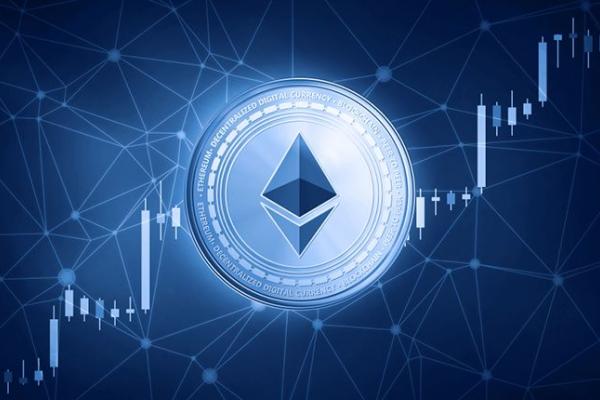What is the Ethereum Prague-Electra (Pectra) upgrade?
Ethereum’s Pectra upgrade combines two separate upgrades: the Prague upgrade and the Electra upgrade.
The Prague upgrade is focused on changes to the network’s execution layer, with the Electra upgrade impacting the consensus layer. These upgrades, when combined, are collectively referred to as the “Pectra” upgrade.
The Pectra upgrade will follow “Dencun,” an amalgamation of the Deneb and Cancun upgrades, which occurred in March 2024. Dencun was technically an Ethereum hard fork designed to lower transaction fees for layer-2 solutions and improve Ethereum scalability.
Pectra is a new milestone on Ethereum’s development roadmap and is scheduled to go live in the first quarter of 2025. This timescale allows for the inclusion of additional features to improve the Ethereum user experience (UX).
Pectra may include Ethereum Improvement Proposal (EIP) 3074, which is a set of code changes to improve Ethereum wallets, allowing users to batch their transactions and sign them off in a single step. EIP-3074 was approved in April 2024 for inclusion in the Pectra upgrade and would allow normal crypto wallets to work like smart contracts.
The Pectra upgrade will also enact EIP-7251, which will increase the staking limit for validators from the current 32 Ether (ETH) to 2,048 ETH. This increase enables validators to hold a balance between 32 and 2,048 ETH, expanding from the previous 32 ETH limit and is designed to reduce the rate at which new validators join the Ethereum network and will mean staking providers allocate fewer resources to staking and validation processes.
The upgrade may also include Peer Data Availability Sampling, or PeerDAS, to scale rollups and EVM Object Format (EOF) to improve smart contract security and developer experience for the Ethereum Virtual Machine (EVM) on layer 1 and layer 2.
Ethereum developers are, however, discussing whether to replace EIP-3074 with EIP-7702, a new transaction type proposed by developers, including Ethereum co-founder Vitalik Buterin, that aims to enhance account abstraction compatibility. Additionally, they are considering implementing a patch for EIP-2935, which addresses the handling of historical block hashes.
Developers are also considering additional EIPs for inclusion in the Pectra upgrade, such as enabling validator withdrawals from smart contracts and removing the deposit window.
Pectra upgrade features and benefits
Pectra upgrades focus on smaller-scale improvements to the consensus layer and execution layer updates.
EIP-7251: Increasing the staking limit
As of June 2024, the maximum effective balance for Ethereum validators is 32 ETH. Therefore, to stake more than 32 ETH, staking providers must spin up numerous validators, each of which must stake 32 ETH. Since each validator must maintain synchronization with the rest of the network, this proliferation of validators may exert pressure on the communication layer of the network.
The Pectra upgrade will allow staking providers to consolidate their stake into fewer validators by raising the maximum effective balance to 2,048 ETH. This will reduce the number of messages that need to be passed around the network, relieving pressure on the validator’s networking layer and possibly enhancing the network’s efficiency and performance.
PeerDAS/rollup improvements
PeerDAS extend the “blobs” introduced in EIP-4844. Blobs are a new way to optimize transaction data storage in Ethereum layer-2 networks, increasing block space and decreasing transaction fees. They were launched as part of the Dencun upgrade in March 2024. Blob-carrying transactions are similar to normal Ethereum transactions but include additional data for off-chain storage, reducing the burden on the main Ethereum chain.
EVM improvements
Improvements to EVM, such as EOF, are planned to innovate and improve UX, developer experience (DevEx), and performance on layer 1 and layer 2.
What are Ethereum Improvement Proposals?
EIPs are a critical part of Ethereum’s development process and are how Ethereum network upgrades are achieved.
An EIP is a proposal or standard that details potential new features, improvements or processes for the Ethereum blockchain network. They contain technical specifications for proposed changes and, according to Ethereum.org, serve as a “source of truth” for the community.
Ethereum network upgrades are proposed to the Ethereum development community and discussed and developed through the EIP process. Anyone within the community can create an EIP, and the author is responsible for reaching an agreement with the Ethereum development community and documenting any contrasting opinions.
EIP authors are usually developers. EIPs enable changes to Ethereum and are proposed, debated, and, if successful, adopted. Ethereum network upgrades, like Dencun and Pectra, consist of a set of EIPs that, once finalized, must be implemented by each Ethereum client on the blockchain’s network.
The Ethereum development roadmap: Prague/Electra upgrade timeline
Ethereum’s Dencun upgrade occurred in March 2024, and Pectra is scheduled to go live in 2025.
Ethereum’s post-merge roadmap is part of what Buterin outlines as a five-step process to improve the smart contract blockchain after Ethereum moved to a proof-of-stake (PoS) consensus mechanism in September 2022. The five stages are Merge, Surge, Verge, Purge and Splurge.
Ethereum developers decided against rushing to release Pectra before Devcon in November 2024 to allow developers to monitor the upgrade more effectively, given their experiences with previous upgrades.
After Pectra, the next upgrade will likely include the highly anticipated “Verkle trees,” a new type of data system allowing Ethereum nodes to store large volumes of data. Pectra is viewed as a relatively small upgrade. According to Tim Beiko, protocol support lead at the Ethereum Foundation, Verkle tree development will take over a year, putting the upgrade well into 2025. This Ethereum network upgrade will be more substantial.
Verkle trees are part of Ethereum’s post-merge roadmap and promise smaller proof sizes and lower hardware requirements for nodes. In a post on X, Vitalik Buterin noted that Verkle tree functionality would allow staking nodes to run with “near-zero hard disk space and sync nearly instantly” to improve UX and user-facing light clients.
Verkle trees are in development as part of the “Verge” stage and may be included in the “Osaka” upgrade likely to follow sometime after 2025’s Pectra milestone.
Source: https://cointelegraph.com/explained/ethereums-next-upgrade-prague-electra-pectra-explained



